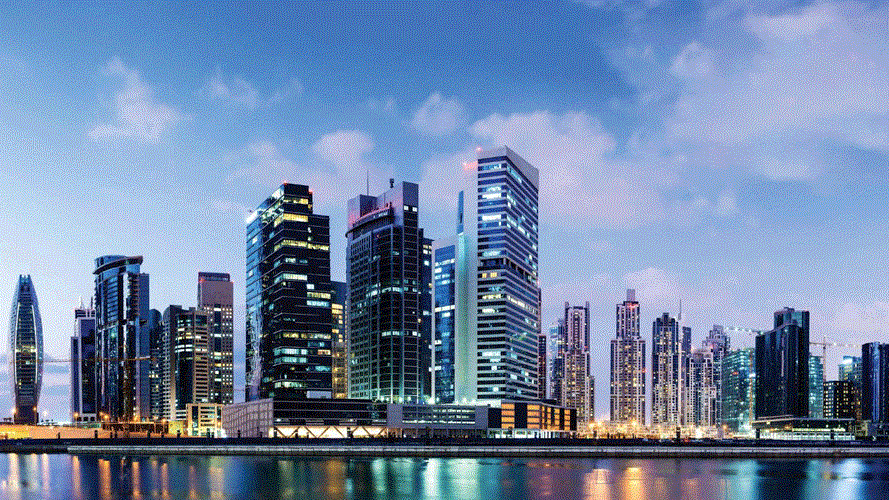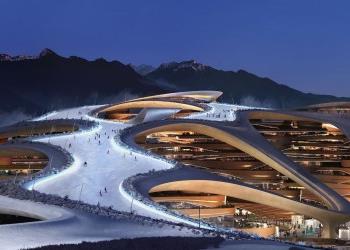

Register for MEED’s guest programme
The urban form of today’s global cities closely follows finance.
Instruments such as mortgage-backed securities, home equity loans, sub-primes, build-to-rent and real estate investment trusts (REITs) intertwine the financial sector with building, and so real estate has responded by moulding the built environment to enable these financial transactions.
The problem is that the primary occupation of this economy is geared more towards speculative gains than the creation of better commodities. And so, considerations for risk-free and quick financial returns have typically altered how building design, asset mixes, occupancies and management are performed. Buildings’ potential to provide shelter, manifest culture, and respond to the environment is giving away to a single role: wealth production.
Finance-friendly strategies
In this context, new design concepts centred around finance-friendly strategies have emerged. Building designs are now required to meet a relatively high level of liquidity to facilitate large-scale buying, investing, and selling. The main design strategies of this ‘liquid architecture’ are:
- Standardising and simplifying spaces
- Maximising the number of tradable assets
- Enabling remote ownership conditions
- Infusing superficial complexity to make assets attractive.
Although they succeed in performing their asset function, these design considerations fail in meeting social and environmental targets that are crucial to achieving sustainability.
The following sections consider the city of Dubai as a case study, analysing four common types of contemporary global urban architecture and the sustainability challenges that each creates.
Residential rugs
Residential subdivisions are by far the biggest asset class in number and land occupation. Although they vary in styles due to location, pricing and financing, common threads across these ‘rugs’ is their repetition of similar unit types, suburban or exurban setting, and their target income groups.
To inexpensively supply these units ‘en masse’, developers typically follow a triple cost-cutting strategy of seeking affordable developable land, reducing construction costs through standardisation, and optimising parcel sizes and built-up areas. The result has been disastrous to cities; urban sprawl is but one of them. Not only has development damaged surrounding ecological habitats and generated exclusive but lifeless townscapes, it has also locked in high operational infrastructure service costs, car-reliant lifestyles, and severed community ties.
The podium tower
A typical module of any global city with a booming speculative real estate market, the podium tower is another example of financial architecture.
It consists of floor plans that are simplified, standardised, and cost-efficient with repetitive apartment layouts. The base structure internalises many of the traditionally urban-level services such as parking, retail, gym, and landscaping, among more complex ones in super-podium versions. The mix creates a pool of serviced property assets that are attractive enough to become secure investment instruments for a global class of financial elite.
But finance-friendly design has created shortcomings as well. The podium by design usually buffers the tower’s residents and offers a bland facade that deadens lively street activity. Supplied in bulk, the series of such towers creates insular enclaves, soulless streetscapes, physical disconnection, and energy-intensive building stock, all of which preclude sustainable and robust city neighbourhoods.
Iconic architecture
Iconicity comes in all development forms, ranging from residential towers to exotic structures as cultural and sports venues. Known as the ‘Bilbao Effect’, property development strategy sometimes invests in creating striking landmarks that promise to dovetail economic activity in their surroundings, particularly related to tourism, entertainment and second homes.
These parametric shapes project a sense of creativity and exclusiveness reassuring private capital of positive outlooks, but this strategy doesn’t always succeed. The ‘build it and they will come’ approach often fails to produce the intended lively neighbourhoods. In such instances there is a risk that the icon could downgrade into a vacant sculpture, with prolonged construction timetables, market changes, and social instabilities resulting in ghost towns marred with countless concrete shells and abandoned buildings.
McMansion estates
In a globalised world, a proliferating class of ultra-high net worth Individuals (UHNWI) are increasingly seeking to park their wealth in signature residences in attractive cities, also known as McMansions. As a result, small clusters of super-premium housing estates have mushroomed in many districts of globally connected cities.
These are usually gated block-size compounds that are complete with exclusive luxury facilities, entertainment venues, sports fields and even utility networks and security corps. While this type of architecture displays ostentatious designs, these ‘billionaire rows’ undermine the host city’s social vitality by converting socially prime real estate into regularly unoccupied and securitised neighbourhoods. McMansions also become resource hogs, undermining host societies’ environmental footprint by their resource-intensive and wasteful services and infrastructures.
Real estate investment is nothing new; on the contrary, financial leverage is important to create healthy and affordable neighbourhoods. However, what is realised in economic efficiency is usually lost in social vitality and environmental performance. Standardisation, simplification, fragmentation, isolation and flamboyance among other finance-friendly strategies threaten the integrity of local environments.
As property is immobile and permanent in nature, city neighbourhoods lock in inefficiencies that undermine their ability to achieve smart growth, environmental sustainability and net-zero goals in the future. By tipping its development balance, the global city risks becoming a victim of its own success.

You might also like...

Adnoc Offshore awards Upper Zakum contract
17 April 2024

Oman awards Batinah coastal road contract
17 April 2024

Oman appoints Al Khuwair Downtown project manager
17 April 2024
A MEED Subscription...
Subscribe or upgrade your current MEED.com package to support your strategic planning with the MENA region’s best source of business information. Proceed to our online shop below to find out more about the features in each package.










